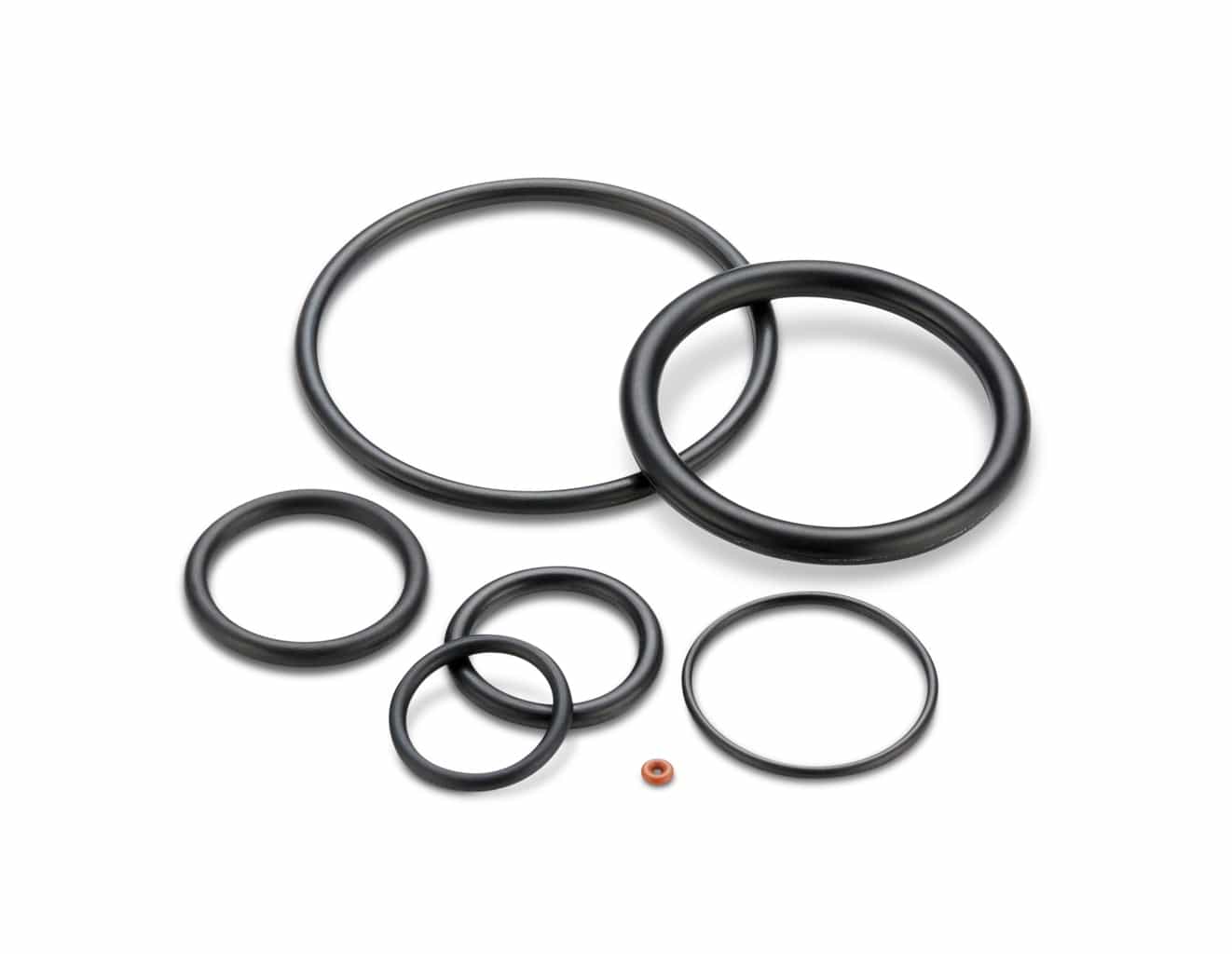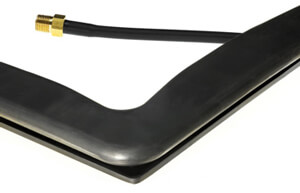
Inflatable Seal Corner Details
Rectangular inflatable seal configurations can be designed for axial expansion, expansion outward, or for expansion inward. In all these cases, how the corners are designed and made is a significant step in the seal design process. Minimum corner diameters by inflatable profile are available as part of the Pneuma-Seal Standards section (sign-in required). When using fabric-reinforced (molded construction) profiles, radiused and square corner dimensions are largely determined by tooling availability, which can also be found in the Tooling tab within the Pneuma-Seal Standards section.
Corners for Axial Expansion
Rectangular seals designed for axial expansion are very common. A typical application would find the seal installed about 1″ from the outside edge of a sliding (or hinged) door. When the door is in position the seal will inflate against the door, which subsequently seals the opening. Depending on the corner dimension, an axially expanding corner (and seal) may be supplied in the following constructions:


Continuous
Axial corners (and seals) may be supplied as a continuous loop. The corner section is then bent to the radius and held in place with retainers (most commonly retainer clips) for Type 1 profiles or installed in channel as with Type 10 profiles. This is the most effective method, but can only be accomplished if the seal profile can handle the radius without kinking.
Formed
Axial corners may be formed or molded to a radius when the corner is too tight for a continuous construction. Note additional time and setup costs are typically required to build corners to this construction.
Square

Square corners are an available option for many of our popular Pneuma-Seal and Q standards. For some, we also offer RSC corners, which are designed to fit a square corner, but have a small radius along the inside corner to improve cycle life. Note all of our square corners are molded and do not employ a miter cut and splice corner construction. Using a mitre cut and splice may be less costly, but the area where the seal will see the most strain is where the splice is. We do not recommend this practice.
Corners for Radial Expansion Outward
Corners designed for radial expansion outward are the best choice for rectangular inflatable seals. As a general rule, depending on specific profile, Pneuma-Seal and Q cross sections (either fabric reinforced or extruded) are flexible enough in radial seal applications to conform to a corner radius of between four (4) and eight (8) times its relaxed height (see Pneuma-Seal Standards for corner data by profile). Note square corners are not available for radial expansion outward configurations, because a 90° corner would cause undue stress and premature failure.

Radial expanding rectangular seals are typically manufactured as a continuous loop, then installed using aluminum retainers (or clips) or simply snapped into a channel. If a channel is used, the seal may sag at the bottom of the loop, especially if the seal is over 12 LF in circumference.
Corners for Radial Expansion Inward
Rectangular seals designed for radial expansion inward are the most difficult from a design standpoint. When expanding inward, the corner must be very generous in order for it to expand properly. If the corner radius is too tight, the profile will likely wrinkle and not seal. Note square corners are not available for radial expansion inward applications, because a 90° corner would cause undue stress and premature failure.
Radial expanding inward rectangular seals are typically manufactured as a continuous loop, then installed using aluminum retainers (or clips) or simply housed in a channel with adhesive.